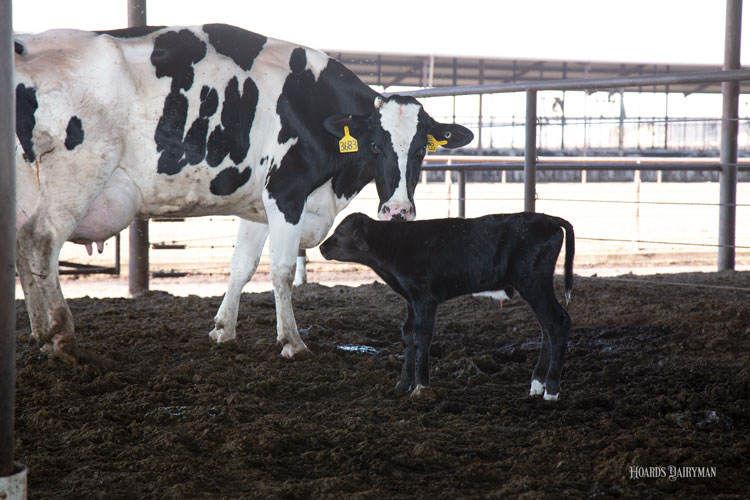
Knowing how to breed desirable dairy-beef calves can make a big difference in the value of this quickly growing system. The question then becomes, how can dairy herds best capitalize on these valuable animals?
Besides sending day-old calves to market, many dairy producers likely aren’t very active in the feedlot process that develops the end product of their matings. However, more opportunities exist if dairies are looking to dive a little deeper into the beef market. Attendees at the Midwest Dairy Beef Day learned about that potential from farmers on both sides of selling and buying these crossbred calves.
Preparing calves for the feedlot
From the dairy perspective, Brian Houin of Homestead Dairy LLC emphasized that the success of their system has stemmed from the healthy working relationship they have with the feedlot that buys their crossbred calves.
That system involves raising the crossbreds to 300 pounds and then sending them to the farm’s partner feedyard. The dairy retains 50% ownership on the animals, and both operations split the profit upon sale.
Homestead has been utilizing beef for the last three years. Houin explained that, like many dairymen and women, they wanted to start using beef because they had too many heifers in their 4,800-cow operation. But before beginning, he wanted to make sure he would have a buyer for the large number of crossbred calves they would be turning out. That’s when he was able to make the connection with his current beef partner, who shared his interest in the consumer side of producing food.
In their system, the feedlot chooses the sires of the crossbred calves — already the Houins have used Angus, Charolais, and Simmental-cross bulls. Then, each month, the dairy ranks all of the animals eligible to be bred that month on genomic Net Merit (NM$). Those ranking in the bottom half are serviced with either beef semen, a beef embryo, or a Holstein embryo from flushes of their elite animals. Sexed semen is used for three services on the top half of heifers. “We either want a female Holstein animal or we want a beef animal,” said Houin.
The beef calves receive colostrum or a replacer at birth and are raised in one of the farm’s autofeeder barns. It generally takes about 75 days for the calves to reach the 300-pound threshold and be ready for the feedyard.
After finishing at the feedyard, the animals are sold through Cargill. Once they have more crossbred animals, Houin said the next goal is to sell directly to a retailer to further connect with consumers.
Raising crossbred steers
A third option, besides selling crossbreds as calves or as feeder cattle, is to raise them to market age yourself. Dennis Patterson feeds out beef cattle and began experimenting with Jersey-beef crosses when his supply of pure Holstein steers downsized. He buys crossbred calves at 3 days old from his dairy producers and starts them in calf hutches, just as he once did when starting Holstein bull calves on his farm.
Attendees heard from multiple speakers at the event that bull calf management is vital to produce quality steers — this includes colostrum, proper castration and dehorning, weaning by 8 weeks, draft-free housing, and a high-energy diet. In short, bull calves should be treated the same as heifers.
Patterson sells semen from his own bulls to his dairy suppliers so the crossbreds are more uniform for market. He’s found that Simmentals cross well with Jerseys, resulting in consistent calves with tremendous marbling.
Creating beef-like calves is a highlight of the program. “The general idea when you look at these calves is, ‘I don’t believe these are half Jersey,’” he says. This helps his animals sell well to packing plants, often only a couple dollars shy of the top beef prices. His steers are sold at 1,350 to 1,375 pounds, typically around 18 to 20 months old.
Develop a strategy
Both speakers clearly exhibited the value of having a plan and a partnership to raise their dairy-beef animals. For this system, it’s important to not just jump on board because it’s a trend. Before getting involved, know what your market is and build a strategy.








